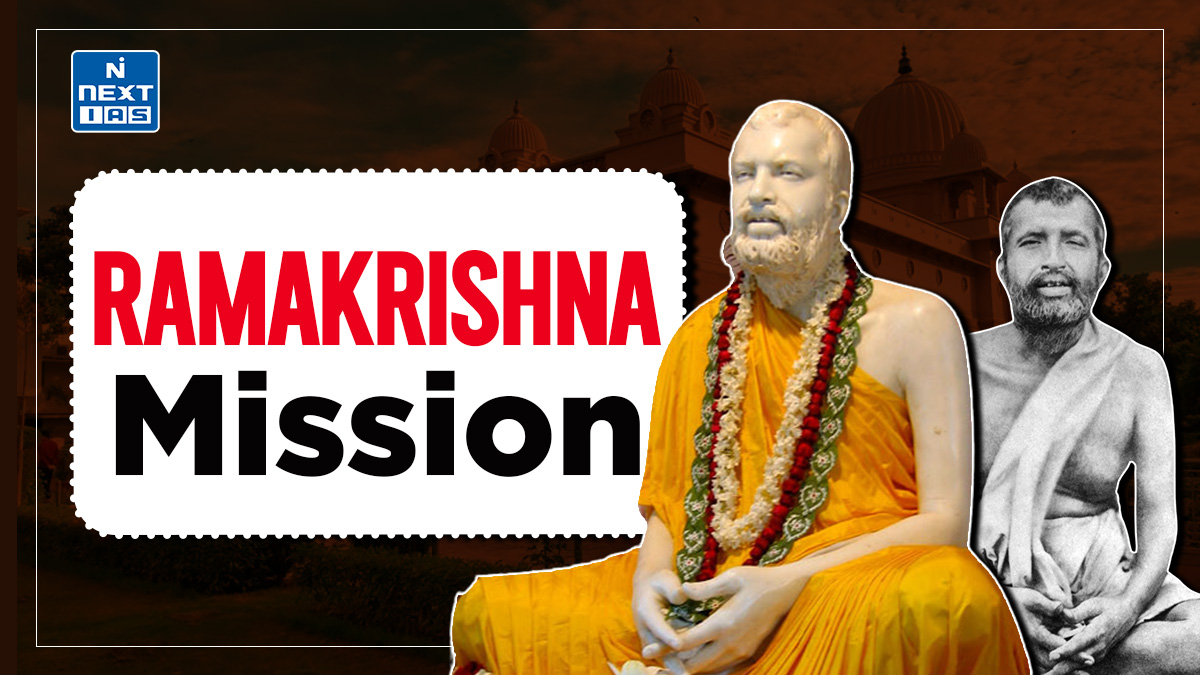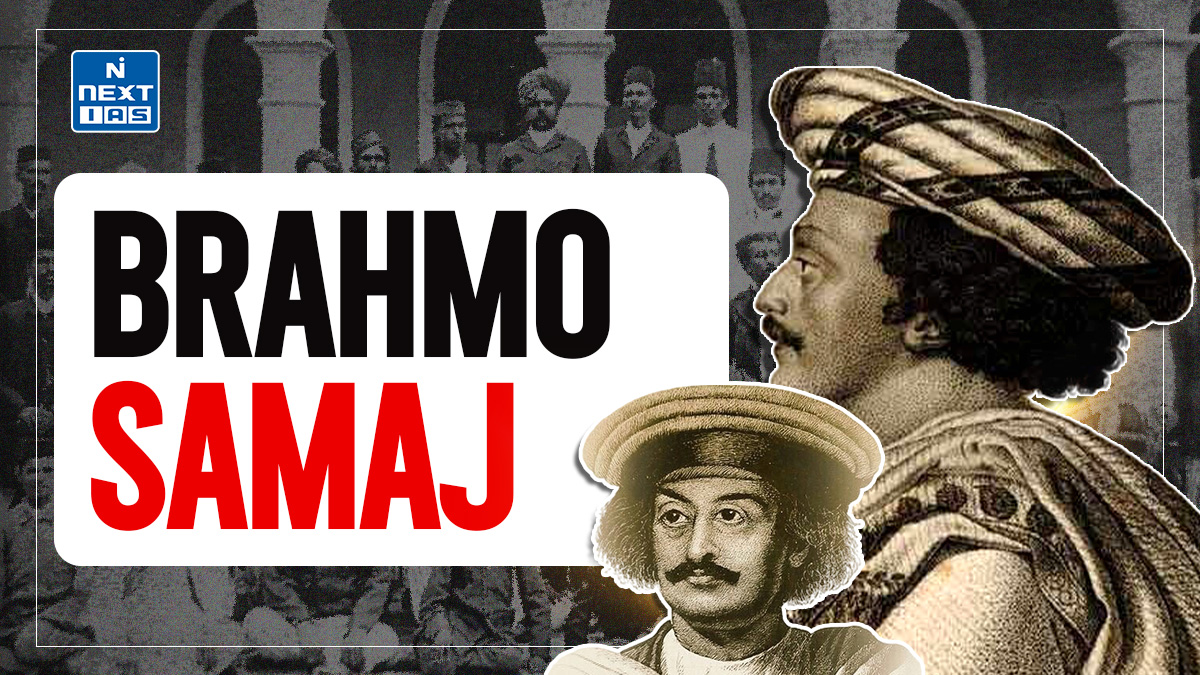
The Ramakrishna Mission, founded by Swami Vivekananda in 1897, is a renowned religious and social organisation inspired by the teachings of Ramakrishna Paramhansa. Its significance lies in its commitment to humanitarian service, spiritual growth, and interfaith harmony, embodying the ideal of “service to humanity is service to God.” This article aims to study in detail the foundation, objectives, activities, and lasting impact of the Ramakrishna Mission.
About Ramakrishna Mission
- The Ramakrishna Mission, established by Swami Vivekananda in 1897, has remained one of India’s most respected religious and philanthropic organisations.
- Ramakrishna Mission draws from the teachings and ideals of Ramakrishna Paramhansa, one of India’s revered spiritual figures.
Teachings of Ramakrishna Paramhansa
- Ramakrishna Paramhansa, known initially as Gadadhar Chattopadhyaya, was born with an extraordinary spirituality and a liberal outlook.
- Ramakrishna Paramhansa married Shardamani Mukhopadhyaya in 1859 when she was just five years old.
- Ramakrishna’s central philosophy was that all religions shared a common truth, each representing a different path to reach the same divine goal.
- Ramakrishna Paramhansa believed that God could be reached through any form of worship as long as it was practised with sincere devotion.
- This inclusive viewpoint led him to deeply respect the fundamental oneness of all religions, a principle that would become foundational to the Ramakrishna Mission.
Founder of Ramakrishna Mission
- Swami Vivekananda, known in his early years as Narendra Nath Dutta, was deeply influenced by Ramakrishna Paramhansa’s teachings.
- After Ramakrishna’s passing, Vivekananda sought to bring his master’s ideas to the world and founded the Ramakrishna Mission in 1897.
- Swami Vivekananda aimed to spread Ramakrishna’s message of religious unity, tolerance, and service to humanity.
- Swami Vivekananda advocated “neo-Hinduism,” a spiritual outlook that blended traditional Indian thought with contemporary ideas.
Objectives of Ramakrishna Mission
The Ramakrishna Mission was established with several key objectives:
- Philanthropy and Charity: The Ramakrishna Mission undertook numerous philanthropic and charitable works, mainly aimed at education, health, and disaster relief, to improve the welfare of society.
- Vedanta Teachings: The Ramakrishna Mission was to spread the message of Vedanta, a philosophical framework emphasising the unity of existence and God-realization, through a dedicated group of disciples who renounced worldly pursuits.
- Service to Humanity as Divine Worship: One of the Ramakrishna Mission’s central doctrines was the belief that serving others is a form of worshipping God. This idea of “service to man is service to God” became the mission’s guiding motto.
- Promotion of Hinduism and Indian Culture: The Ramakrishna Mission also aimed to glorify Hinduism and present its cultural richness to the world, correcting misconceptions and showcasing the vibrancy of India’s spiritual heritage.
Ideals and Vision of Ramakrishna Mission
- The Ramakrishna Mission aimed to provide religious and social reform rooted in the values of ancient Indian culture while being open to integrating Western ideals.
- Swami Vivekananda did not dismiss Western influences entirely; instead, he advocated adopting Western methods and ideals where they could benefit Indian society.
- This balanced approach helped the mission connect to both Eastern and Western audiences, building a bridge between the two cultural worlds.
Role of Ramakrishna Mission in Social Welfare
- Unlike traditional religious bodies, the Ramakrishna Mission refrained from endorsing elaborate rites, rituals, or symbolic worship, though it did accept idolatry as a personal practice.
- Ramakrishna Mission emphasised practical spirituality and focused on humanitarian relief efforts, from running schools, colleges, and hospitals to offering assistance during natural disasters.
- Ramakrishna Mission’s doors were always open to people of all faiths, creating an inclusive atmosphere for anyone in need.
Legacy of Ramakrishna Mission
- Ramakrishna Mission promotes social welfare, cultural revival, and global spiritual understanding.
- With branches worldwide, the organisation has inspired countless individuals to live in service of others, embodying the mission’s motto, “Service of man is service of God.”
Conclusion
The Ramakrishna Mission, with its foundation in the teachings of Ramakrishna Paramhansa and the vision of Swami Vivekananda, has made lasting contributions to India’s social and spiritual landscape. Combining service, religious tolerance, and a celebration of Indian culture, the mission continues to embody its founders’ ideals, inspiring future generations.
Frequently Asked Questions (FAQs)
Who was the foremost disciple of Ramakrishna Paramahamsa?
Swami Vivekananda was the foremost disciple of Ramakrishna Paramahamsa, who was dedicated to spreading his teachings and philosophy.
Who founded the Ramakrishna Mission?
The Ramakrishna Mission was founded by Swami Vivekananda in 1897.
Why did Swami Vivekananda establish the Ramakrishna Mission?
Swami Vivekananda established the Ramakrishna Mission to promote the teachings of Ramakrishna Paramahamsa, emphasising spiritual growth, social service, education, and religious harmony to uplift humanity and serve society.





